Refine search
Actions for selected content:
52 results
3 - Possession and Enslavement through the Holy Spirit
-
- Book:
- God, Slavery, and Early Christianity
- Published online:
- 19 September 2025
- Print publication:
- 09 October 2025, pp 131-165
-
- Chapter
- Export citation
4 - Enslaved Surveillance and Spirit–Flesh Symbiosis
-
- Book:
- God, Slavery, and Early Christianity
- Published online:
- 19 September 2025
- Print publication:
- 09 October 2025, pp 166-199
-
- Chapter
- Export citation

The Cambridge Companion to Christian Liturgy
-
- Published online:
- 19 September 2025
- Print publication:
- 09 October 2025
7 - Theological Benefits of the Instrumental Doctrine
- from Part III - Theological Implications
-
- Book:
- The Humanity of Christ as Instrument of Salvation
- Published online:
- 21 August 2025
- Print publication:
- 04 September 2025, pp 201-225
-
- Chapter
- Export citation
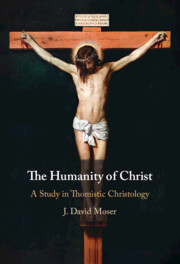
The Humanity of Christ as Instrument of Salvation
- A Study in Thomistic Christology
-
- Published online:
- 21 August 2025
- Print publication:
- 04 September 2025
10 - Preaching on the Trinity
- from Part III - Augustine’s Preaching Themes
-
-
- Book:
- The Cambridge Companion to Augustine's Sermons
- Published online:
- 26 May 2025
- Print publication:
- 12 June 2025, pp 193-208
-
- Chapter
- Export citation
9 - God’s Unfolding Purpose
- from Part III - Reconfiguring the Story
-
- Book:
- Constructing an Incarnational Theology
- Published online:
- 09 January 2025
- Print publication:
- 23 January 2025, pp 216-243
-
- Chapter
- Export citation
7 - Cyril of Alexandria
-
- Book:
- Human Salvation in Early Christianity
- Published online:
- 09 January 2025
- Print publication:
- 23 January 2025, pp 204-236
-
- Chapter
- Export citation
4 - Second-Personal Worship
- from Part II - What Is Worship?
-
-
- Book:
- The Philosophy of Worship
- Published online:
- 09 January 2025
- Print publication:
- 23 January 2025, pp 51-69
-
- Chapter
- Export citation
7 - God
- from Part III - Reconfiguring the Story
-
- Book:
- Constructing an Incarnational Theology
- Published online:
- 09 January 2025
- Print publication:
- 23 January 2025, pp 167-187
-
- Chapter
- Export citation
The Spirit in relation to the Word, means in relation to grace
-
- Journal:
- Scottish Journal of Theology / Volume 78 / Issue 1 / February 2025
- Published online by Cambridge University Press:
- 22 January 2025, pp. 24-36
- Print publication:
- February 2025
-
- Article
- Export citation
Aquinas’s Ethics: the Infused Virtues and the Indwelling Holy Spirit
-
- Journal:
- New Blackfriars / Volume 106 / Issue 1 / January 2025
- Published online by Cambridge University Press:
- 25 March 2024, pp. 1-12
- Print publication:
- January 2025
-
- Article
- Export citation
The regeneration of the cosmic mind: cosmopsychism, mental chaos, and the new creation
-
- Journal:
- Religious Studies , First View
- Published online by Cambridge University Press:
- 20 March 2024, pp. 1-17
-
- Article
-
- You have access
- Open access
- HTML
- Export citation
4 - Salvation through Justification
-
- Book:
- Paul and the Resurrection of Israel
- Published online:
- 02 November 2023
- Print publication:
- 23 November 2023, pp 145-181
-
- Chapter
- Export citation
8 - The Spirit of Christ
- from Part III - The Body of Christ
-
- Book:
- An Augustinian Christology
- Published online:
- 02 November 2023
- Print publication:
- 16 November 2023, pp 281-309
-
- Chapter
- Export citation
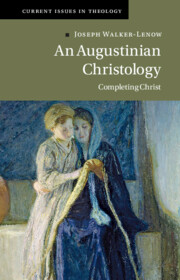
An Augustinian Christology
- Completing Christ
-
- Published online:
- 02 November 2023
- Print publication:
- 16 November 2023
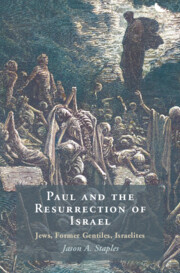
Paul and the Resurrection of Israel
- Jews, Former Gentiles, Israelites
-
- Published online:
- 02 November 2023
- Print publication:
- 23 November 2023
Chapter 22 - A Religion of the Word and the Question of Authority
- from Part III - Laudianism: What It Wasn’t
-
- Book:
- On Laudianism
- Published online:
- 05 October 2023
- Print publication:
- 19 October 2023, pp 288-307
-
- Chapter
- Export citation
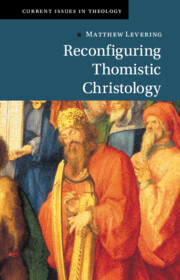
Reconfiguring Thomistic Christology
-
- Published online:
- 24 May 2023
- Print publication:
- 30 March 2023
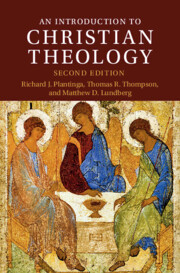
An Introduction to Christian Theology
-
- Published online:
- 18 October 2022
- Print publication:
- 03 November 2022
-
- Textbook
- Export citation
